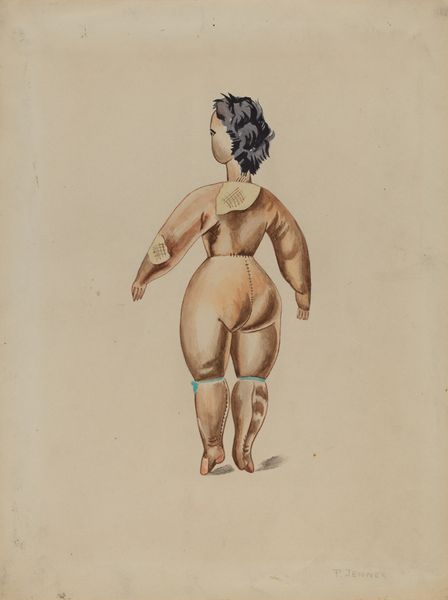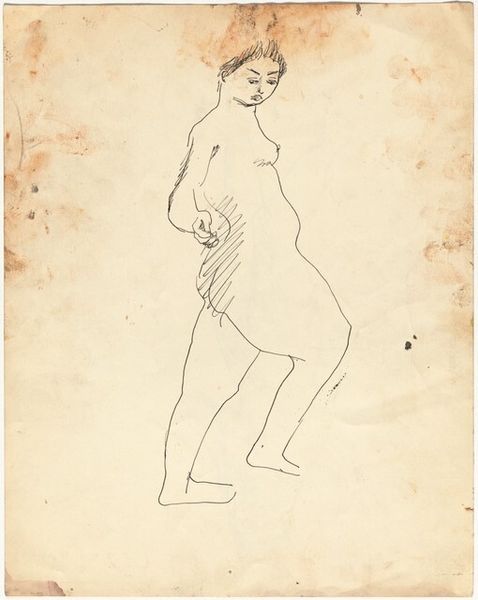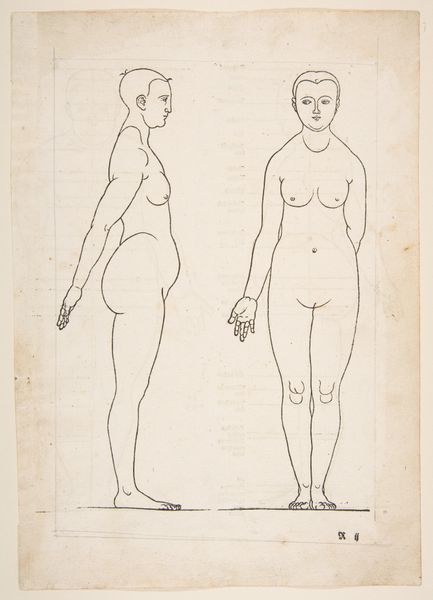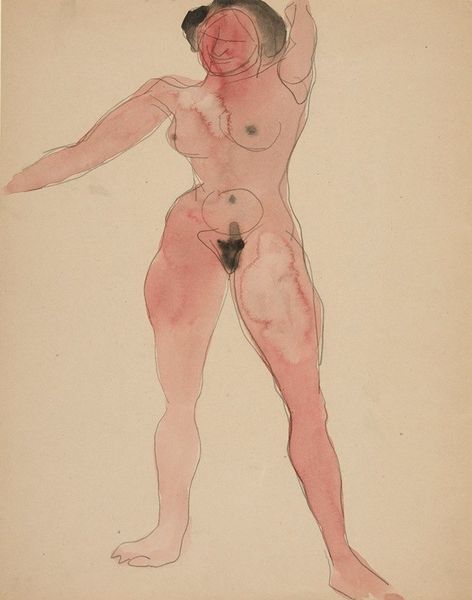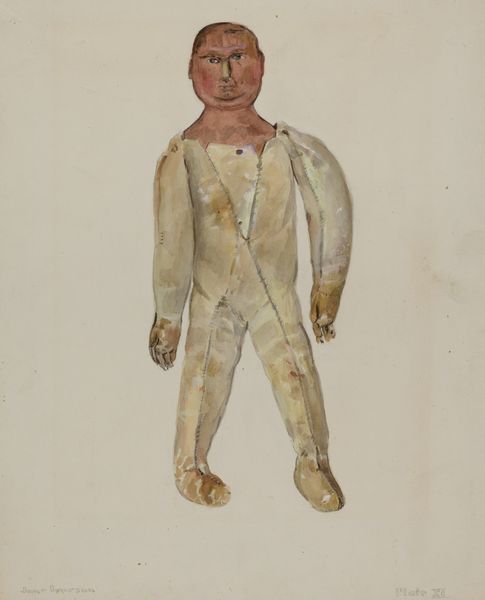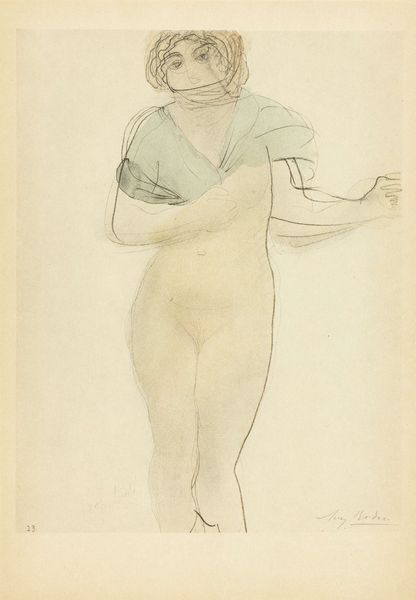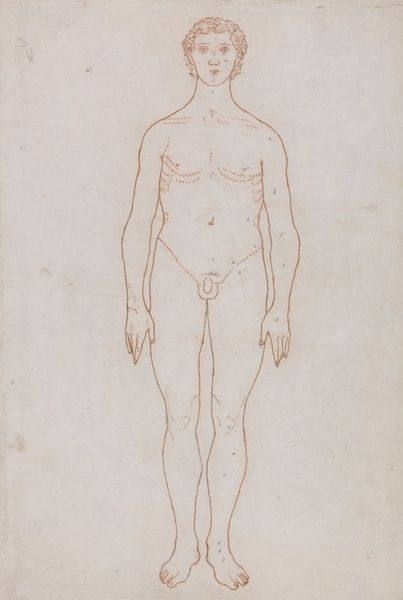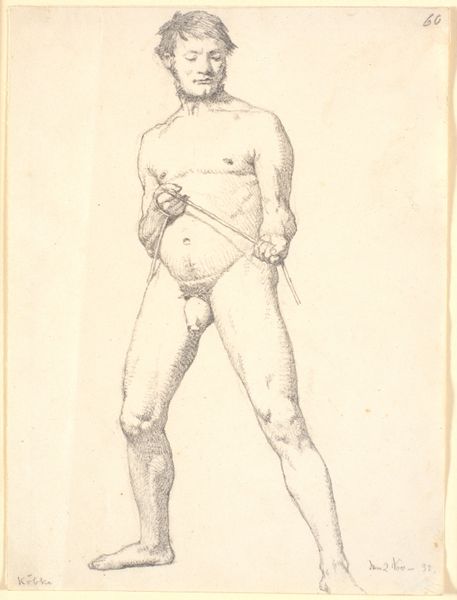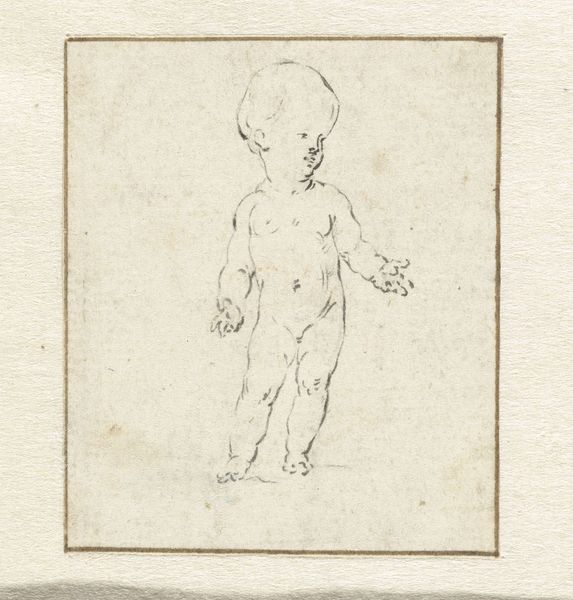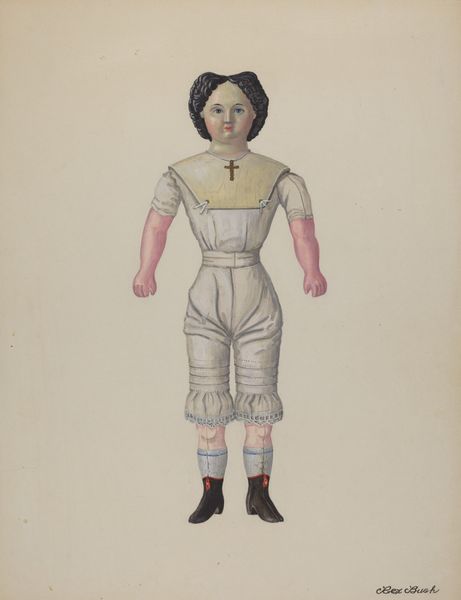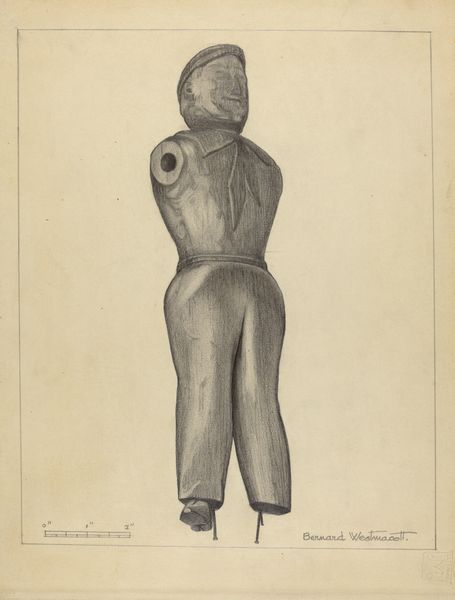
drawing, paper, watercolor, ink
#
portrait
#
drawing
#
charcoal drawing
#
figuration
#
paper
#
watercolor
#
ink
#
naïve-art
#
portrait drawing
#
graphite
#
modernism
#
watercolor
Dimensions: overall: 35.5 x 28 cm (14 x 11 in.) Original IAD Object: 8" high
Copyright: National Gallery of Art: CC0 1.0
Curator: This curious artwork is "Nude Doll" by Max Fernekes, likely created between 1935 and 1942. It’s a combination of watercolor, ink, charcoal, and graphite on paper. What are your initial impressions? Editor: It’s…unsettling. The figure seems both childlike and disturbingly aged, like a distorted memory. It is quite different from what I was expecting. Curator: That discomfort might stem from the era it was created, a period marked by the rise of fascism and anxieties surrounding identity and representation. The doll, as a representation of idealized femininity, is rendered in a deliberately unidealized manner, perhaps even mocking conventional standards of beauty, you see? Editor: I do. The crude stitching around the "body" feels almost ritualistic, doesn't it? Like a folk effigy, something laden with intent beyond simple representation. The blank stare, the slightly splayed limbs...it's as if it embodies vulnerability and a subtle warning. Curator: Precisely. The doll is often seen as a symbol of innocence, but here, Fernekes strips away that naivete, exposing the social constructs inherent in such representations. Editor: Consider the era’s artistic obsession with the uncanny – the unsettling familiarity. Doesn’t this "Nude Doll" resonate with the collective anxieties surrounding artifice, especially concerning the female body in interwar European society? Curator: Definitely. And we need to think about the 'naive' art style too, its connection to art brut, rejecting academic convention to give voice to something raw, unfiltered. Editor: There is something really powerful here in the refusal to idealize. It leaves the viewer grappling with the complexities of how we perceive the body, particularly the female form, and the inherent violence of such perceptions. The image reminds us how quickly symbols turn from playful to monstrous under societal pressures. Curator: Absolutely, It pushes us to question who gets to define 'normal' and the consequences for those who don't fit neatly within those confines. Editor: A complex, troubling piece offering us no easy answers but many provocative questions. I think a new audience today would engage strongly with this. Curator: Indeed, a truly rich artwork and further proof of the power and resilience of art in times of turmoil. Thank you for your thoughts on this, I greatly appreciate it.
Comments
No comments
Be the first to comment and join the conversation on the ultimate creative platform.

